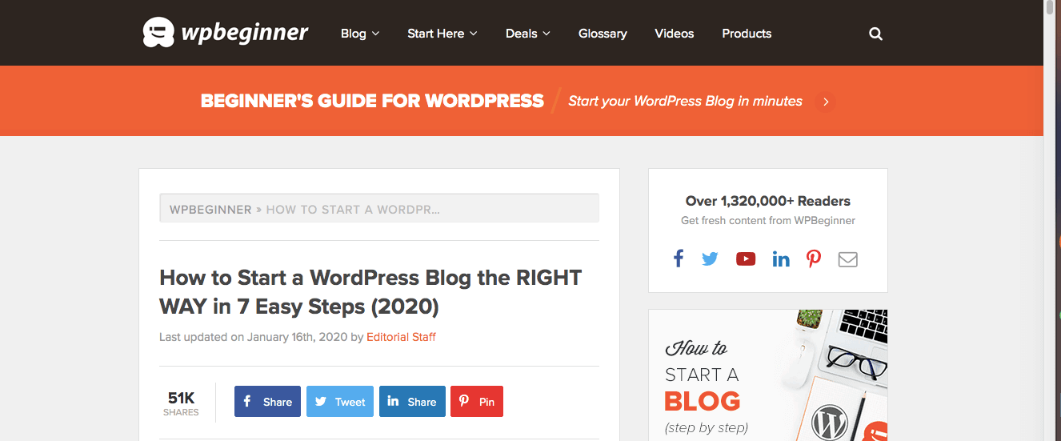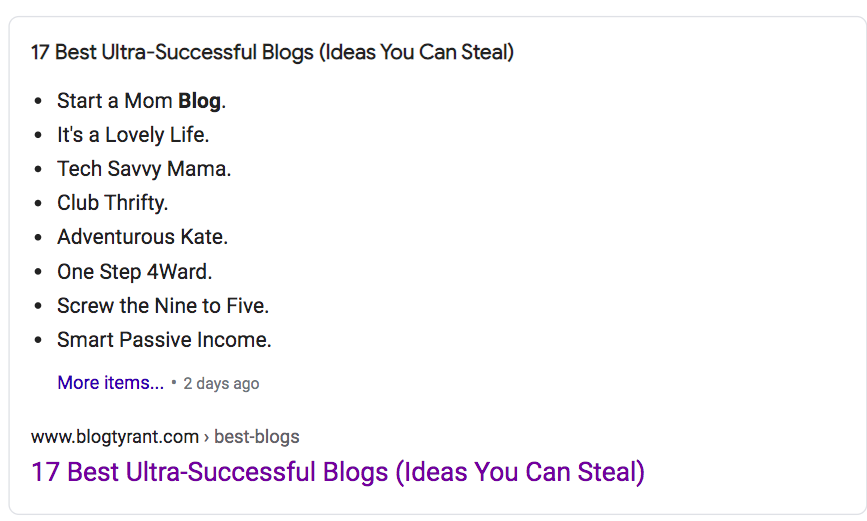
W ant to learn how to create SEO title tags? Good news, you've come to the right place.
Optimizing your title tags is a simple way to increase traffic to your blog. That’s because title tags are an important ranking factor that Google looks at to determine what your page is about.
Plus, optimizing your titles to make them more eye-catching and interesting will get more people to click on them and share your content.
In this post, we’ll teach you what SEO title tags are and 5 ways to optimize them.
Let’s get started!
In This Guide:
What Are SEO Title Tags?
An SEO title tag is a bit of HTML code that determines what page title shows up in search results and on social media. SEO title tags are also known as meta titles.
For example, the title tag for our post on how to write a newsletter is “How to Write a Newsletter That Gets Results (17 Tips)”.

Your SEO title tag doesn’t necessarily need to be the same as the title on the page itself. For example, check out this post from WPBeginner on how to start a WordPress blog:


Notice how the title tag is different from the blog post heading.
We actually have a whole other guide on how to write good blog post titles!
But in this guide, we’ll focus just on the SEO title tags, which you can optimize separately for more clicks and traffic.
Are SEO Title Tags Really Important?
Yes! Title tags are an important ranking factor for your blog’s search engine optimization. If you want to get more traffic to your blog, it’s important to optimize them.
SEO title tags are important for 2 reasons:
#1 – They attract users to your blog
Think back to the last time you searched for a topic online. What convinced you to click on a certain post?
Likely it was the title that caught your attention and drew you to their site.
#2 – They help Google identify your topic
Every so often, Google bots will crawl and index your site. An optimized title tag helps Google identify what your content is about.
In fact, title tags are one of the most important SEO ranking factors on a web page.
For this reason, you should always include your target keyword in the title tag. We talk about this more later in this post.
All in all, an optimized SEO title can help your overall blog SEO strategy. So how do you add an SEO title tag to your content, anyway?
How to Change the SEO Title in WordPress
Before we jump into our tips, you’ll need to know how to change your SEO title in WordPress.
WordPress doesn’t have a way to change your SEO titles by default. Luckily, you can easily change them with a plugin.
All in One SEO is the best WordPress SEO plugin that we recommend for every site.
With AIOSEO, it’s easy to optimize your title tags with just a few clicks.
While you’re editing or creating a new post, just scroll down to see the All in One SEO settings box.
There you can type in your meta title, and it’ll calculate your character count for you.

Then take a look at the Preview Snippet to see what your title tag will look like on search engines.
All in One SEO does much more than help you optimize your titles. It also helps you optimize your meta description, schema, social media posts, and more.
Now that you know how to change your SEO titles in WordPress, let’s look at our tips for optimizing those titles.
5 Tips to Create SEO Title Tags
The following tips will help you create optimized title tags and drive more traffic.
1. Include Your Target Keyword
If you’re familiar with keyword research, then you already have a target keyword in mind that you want your post to rank for. Your SEO title tag should also include that keyword.
Here’s why:
Like we mentioned earlier, your meta title helps Google identify your topic, and keywords help Google do that.
Let’s take a look at one of our title tags.

In this post, we help readers start a food blog.
The keyword used in this title was “Start a food blog.” When Google crawled this post, they used the words in the title to understand what our blog post was about.
When users search “Start a food blog” or “How to start a food blog,” our blog post pops up – and having an optimized title is a big part of that.
Now you might be wondering:
#1 – Can I use more than one keyword in a title tag?
If more than one keyword fits nicely in your title, then why not? Here’s an example of a title tag with 2 keywords.

The 2 keywords used in this post are “How to come up with a blog name” and “Blog name examples.”
On the other hand, if your goal is to stuff as many keywords as possible in a title tag, we suggest otherwise.
For example, we wouldn’t use a title like “How to Come Up With a Blog Name: Blog Name Examples” because it sounds repetitive and looks like obvious keyword stuffing.
#2 – Where should I place my keyword?
If it makes sense, you should place your keyword at the beginning of your title. You can use a colon (:) or (-) dash to help you out, like below.

Keyword search tools SEMrush will help you find the best keywords for your post. You can also read this post to learn more about which keyword research tools to use.
2. Use Power Words
Also known as action words, power words get users excited about your post. They tell readers, “My blog post has the BEST ideas about this topic.”
Let’s take a look at one of our SEO titles with power words.

In this case, the power word is “Ultra-Successful.” Notice how this spices up the normal, “17 Best Blogs” to something more interesting.
Here’s a quick list of power words you can use in your SEO title tags:
- Best
- Easy
- Simple
- Limited
- Exclusive
- Beware
For more, check out this list of 700+ power words.
As you create a powerful meta title, keep the title’s length in mind. If your title tag becomes too long, it’ll get cut off on the results page.
While the cutoff depends on the width, a good rule of thumb is to keep your title tag at around 60 characters.
That’s another reason why we recommend using All in One SEO. You can preview what your title tag looks like on search to make sure it doesn’t get cut off.
3. Use Proven Headline Formulas
We’ve all seen posts like, “The Top 10 House Plants” or “How to Buy Tasty Coffee.”
Both of these titles highlight the blog post format. The format tells readers what type of post they’re reading.
For example, “How to Buy Tasty Coffee” is a tutorial. It teaches their audience how to buy good coffee.
“The Top 10 House Plants,” on the other hand, is a list post. It recommends a list of 10 different house plants for plant owners.
When you use the format in your title tag, it tells your readers 2 things:
- Your blog post is easy to read
- Your blog post is actionable
Let’s take a look at a few examples.
#1 – How to / Guides
Are you teaching your readers how to do something? Add a “How to” at the beginning of your title tag. Or, you can use the word, “Guides.”
Guides are usually long-form articles—they tell you everything you need to know about a topic.
At Blog Tyrant, we label a lot of our posts as guides:

#2 – Beginners Guide / Step by step
These phrases are great for beginner posts. They reach out to anyone who wants to learn something new.

Learning about custom dimensions isn’t a walk in the park. Any beginner would be happy to see a detailed guide about it.
#3 – Expert tips / X ways to… / The top X tips…
If you have a blog, you’ve probably written many list posts. Online readers love list posts because they’re fast and relevant.

#5 – Recent post
Did you write a blog post with the latest statistics or trends? You can add the year to your meta title.

When you add the year to your post, it tells users “My article is up-to-date!”
Overall, including the format in your title tag gives readers a better idea of your blog post topic.
4. Use Special Characters
Want to know another way to add more pizazz to your SEO title tags? Try adding special characters, like a parenthesis, dash, or colon.
Let’s take a look at a few examples.

Notice the parenthesis around “3 Easy Methods?” This is a great way to add your blog post format as we discussed in step 3.
Another special character you can use is a dash.

Instead of writing something generic like, “Should You Use MonsterInsights or Analytify?” They used a dash to catch a reader’s attention.
And why not use a colon like below?

Without the colon, OptinMonster’s title tag would probably look something like this: How to Recover Abandoned Carts and Skyrocket Sales in 12 Ways.
That’s a mouthful, right?
With the colon, their SEO title separates 2 different sentences into 1. Plus, it’s easy to understand.
Here are a few more special characters you can use in your title tags:
- Ampersand (&)
- Quotes (“)
- Vertical bar (|)
- Comma (,)
5. Use a Headline Analyzer
When it comes to SEO title tags, it can be hard to check your own work. Your title might look great to you, but what about everyone else?
Well…Why not use a headline analyzer to double-check your work?
MonsterInsights, for example, automatically scores your title from 1 to 100, right on your dashboard.

Along with scoring your meta title, MonsterInsights will analyze it too. Power words, sentiment, and the headline type are a few examples.

Want to compare other title tags? Click on Try New Headline to test out new titles.

When you use these suggestions and improvements, you’ll create an irresistible SEO title in no time.
And that’s a wrap!
SEO title tags help drive more traffic to your blog and improve SEO. We hope you use these 5 tips to write your own clickable title tags.
Along with this guide, you may want to check out the best SEO tools and 6 SEO secrets for bloggers.


0 Comments
Join in. The comments are closed after 30 days.